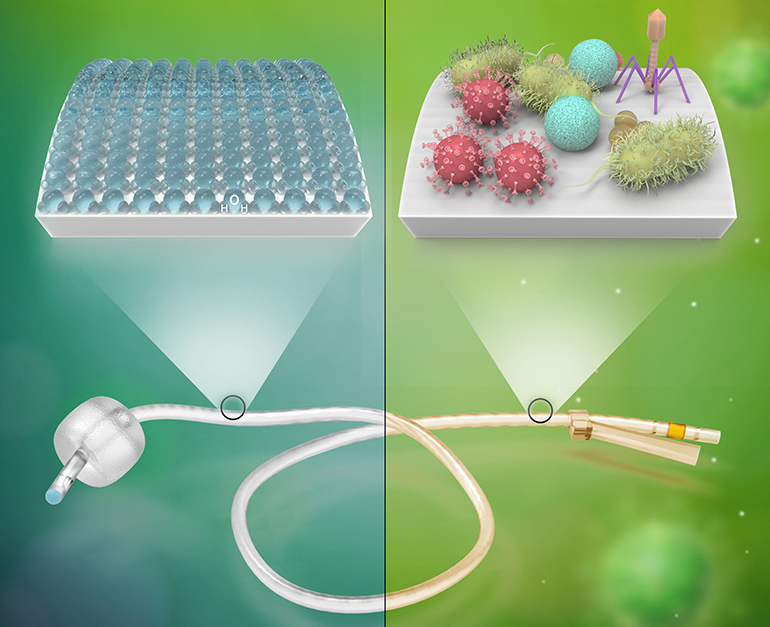Researchers at the University of California Los Angeles have created a zwitterion polymer coating for in-dwelling medical devices, such as urinary catheters, that prevents microbes from adhering and creating troublesome biofilms. Recurrent infection and biofouling are a serious problem for such devices, leading to the overuse of antibiotics and the consequent rise of drug-resistant microbes. The new coating is antibiotic free and works by binding water tightly, creating a thin hydration barrier that deters microbes from binding and proliferating.
In-dwelling catheters are a constant worry for patients and healthcare staff, as the occurrence of microbial growth on such surfaces is very common. This can cause a variety of complications, including local pain, discomfort, and device failure. This usually necessitates catheter removal and replacement, as well as the use of antibiotics. For patients who require such devices for extended periods, this issue can seriously affect quality of life. Antibiotics simply aren’t a viable long-term solution as the rise of drug-resistant microbes is teaching us.
Drug-free options are to be welcomed, and this latest anti-microbial coating fits the bill. “The beauty of this technology is that it can prevent or minimize the growth of biofilm without the use of antibiotics,” said Richard Kaner, a researcher involved in the study. “It protects patients using medical devices — and therefore protects all of us — against microbial resistance and the proliferation of superbugs.”
The zitterion polymer coating binds water molecules tightly, creating a layer of water around the device that inhibits microbes from binding. The technology is biocompatible, and is relatively low cost compared with other antimicrobial coatings, such as silver coatings or antibiotic-loaded surfaces.
So far, the UCLA researchers have tested their coating in 16 long-term urinary catheter users, who tried the technology out in the form of silicone catheters with the zwitterion polymer layer. Ten of the patients described their urinary tract issues as “better” or “much better” following a trial of the coated catheters, and 13 out of 16 chose to switch to the new catheters permanently.
“One patient came to UCLA a few weeks ago to thank us for changing her life — something that, as a materials scientist, I never thought was possible,” said Kaner. “Her previous catheters would become blocked after four days or so. She was in pain and needed repeated medical procedures to replace them. With our surface treatment, she now comes in every three weeks, and her catheters work perfectly without encrustation or occlusion — a common occurrence with her previous ones.”
Studies in Advanced Materials: A Readily Scalable, Clinically Demonstrated, Antibiofouling Zwitterionic Surface Treatment for Implantable Medical Devices
Via: UCLA
